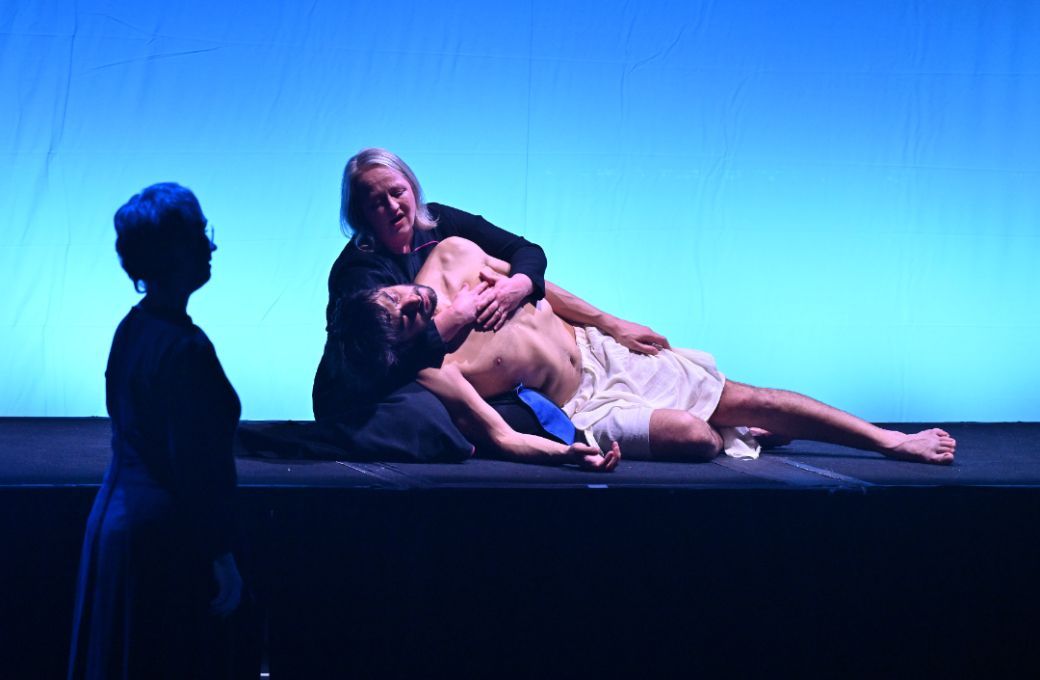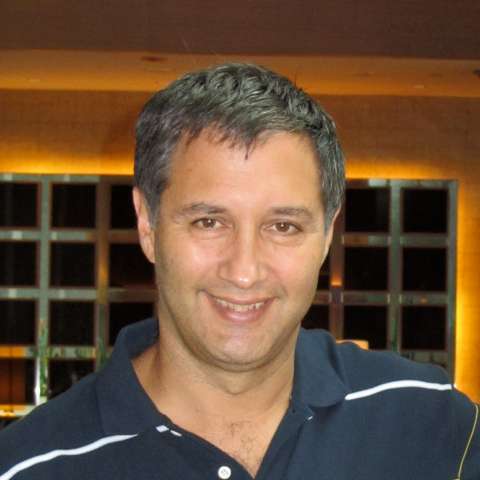On a darkened stage, a man appears clad in white – bright but ragged. He is slowly joined by nine black-clad figures. Ethereal voices begin to be heard, the cry of Jesus on the Mount of Olives “Father, let this cup pass from me”, plunging us into an ancient story and an ancient sound world.

Last night’s programme at the Barbican, entitled Gesualdo Passione, certainly didn’t lack ambition. Six singers from Les Arts Florissants, headed by Paul Agnew singing tenor, performed a selection from Carlo Gesualdo’s Tenebrae Responsoria, devotional pieces for Holy Week services in which the church would gradually descend into darkness, an effect mimicked by Xavier Lazarini’s lighting. Singing an hour of Gesualdo from memory is a feat in itself, because this is intricate polyphony with daring harmonic clashes crunchier than anything that would be heard for centuries after the composer’s death (but then he was an independently wealthy Italian prince who really didn’t have to worry about what his contemporaries thought about him). But singing wasn’t enough: here, the singers were required to merge with four dancers from the Compagnie Amala Dianor into a single body, telling the story through voice and movement.
The vocal quality was out of the very top drawer. Every voice had its distinctive timbre, of great purity and beauty, the timing of the interweaving of the voices was faultless, so much so that in the homophonic line evoking Jerusalem that was interposed between each Responsorium, you had the strange sensation of hearing a single voice spanning multiple octaves. The trouble was, all that purity came at the expense of the story. The Passion of Christ is, after all, one of the great pieces of drama: a betrayal, death and resurrection that saves the human race. With an hour of music at a steady slow tempo, it falls to the singers to inject that drama through dynamics and phrasing – whereas what we actually heard was stunningly beautiful devotional music which didn’t really change much according to whether we were hearing about Christ’s plea to his Father, the indictment that Judas should never have been born or the lamentation of “O vos omnes”, the call to passers-by to consider Christ’s sorrows. The closing Miserere was a prayer rather than a desperate appeal for pity.
In similar vein, the four dancers showed themselves to be artists of the highest quality. Their movements were fluid, elegant, co-ordinated when moving together, a true delight to watch. You have to assume that it was a challenge for them to perform in the same group as six non-dancers, but they gave not the slightest indication of this being in any way problematic. The tableaus they created of Christ on the Cross and the Pietà were exquisite. But here again, the slow tempi seemed to hamstring them, as did choreography that contained far too much devotional procession and far too little passionate storytelling. There were moments of explosive brilliance like the tarantella-esque ravings as Judas becomes insane at the realisation of what he has done. But these were far too infrequent to sustain interest, and the evening felt long even though the programme ran for only just over an hour.
I’m all for genre-busting experiments. I’m particularly in favour when the experiment includes awe-inspiring music from a genre I adore (Renaissance polyphony) and brings together incredible voices and dancers. Sometimes, as was the case last night, the result falls well short of the sum of its parts. But hats off to them for effort.


